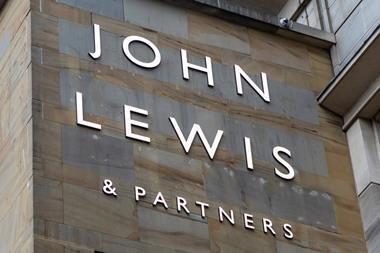Once the deal has been completed and the private equity firm gets its hands on the keys to the door of its latest retail buy-out, one of its major areasof focus is likely be the supply chain.
There are many examples of private equity radically changing retailers’ supply chains. Take Debenhams, where payment dates to suppliers have gone from 27 to 60 days and the number of suppliers has been cut. This may not have been popular with some, but it has increased the retailer’s margins significantly and, on top of this, operational efficiencies will have also been driven up.
Such change often does not involve anything more complicated than establishing best practice, according to Bridgepoint partner Guy Weldon. “It’s not a case of private equity sprinkling pixie dust over a retailer so that it suddenly, magically improves; it’s about making sure there are proper procedures in place,” he says.
Weldon says it is not just about private equity firms making improvements, but also creating the right environment for best practice and bringing in sufficiently smart people to implement it.
At Pets at Home, Bridgepoint brought in a new logistics director who, Weldon says, helped improve a “whole heap of stuff” within the business that was not necessarily done badly before, but could be improved. Changes included improving the stock-turn while ensuring on-shelf availability was maintained.This involved working with suppliers on lead times, so that less stock was held by the company in its warehouses. Pets at Home also sought to put in place sale-or-return agreements with some of its suppliers.
It also rationalised its supplier base to leave it with a preferred core – a process Weldon says is not about “using scale to beat them over the head and get them to supply more product”, but about getting suppliers to “invest” in the business, for example, collaborating on the development of new products.
For Bridgepoint and other private equity players in retail, one of the major drivers behind these changes is the need to improve cash generation within their portfolio companies – especially during the early stages of a buy-out.
Graphite Capital partner Anne Hoffman says: “The supply chain is an important area of focus because you don’t want cash tied up in it.” When Graphite owned Jane Norman, it sought to take the company further down the route of so-called fast fashion – with products hitting the stores just three weeks after design.
In order to further reduce the levels of stock carried, Hoffman says it looked at all parts of the supply chain, including warehousing and logistics, with a view to “reducing the time between the purchase of goods from suppliers and when they hit the shelves”. Because of the small warehouses at Jane Norman, Hoffman
says it also considered introducing cross-docking: taking finished goods from the manufacturing plant and delivering them directly to the retailer with minimal handling in between.
Director of strategy consultants OC&C Luke Jensen agrees that examining all parts of the supply chain is crucial. “The first year of private equity ownership is about cash generation and a significant way to achieve this is to reduce stock levels and re-negotiate terms with suppliers, which can generate cash very quickly,” he says.
He says key areas for negotiation are absolute price, payment days and other cash terms, such as promotional support, which can be particularly complex in food retail. There is likely to be discussion of these same issues following almost every deal undertaken by a private equity firm in the retail sector.
Although rationalisation of supplier bases during these discussions is likely in many cases, Jensen says that this should be seen as a potential positive for many suppliers. Because private equity firms undoubtedly have aggressive growth plans for their portfolio companies, this leads to increased business down the line for the preferred suppliers.
Changing the supplier base and focusing on a select core has certainly been the strategy of Merchant Equity Partners since it bought MFI last year. It has been radically changing the entire supply chain, having recognised the potential gains to be made from such action before buying the business.
Merchant Equity Partners associate Sophie Field says: “A huge overhaul was needed, with a complete re-sourcing of the product range since we broke links with Galiform [MFI’s former manufacturing and wholesale arm] and the purchase of a new distribution centre. We’ve not gone live completely yet, but by this time next year, MFI will be a new company.”
Improving the supply chain is integral to the MFI deal, but for some private equity players, a particularly bad existing infrastructure could be off-putting. Weldon cites Mothercare as a business that, some years ago, had “horrendous” supply chain problems that would have been a sufficiently tough challenge to deter potential acquirers.
However, Advent International director Tim Franks believes the supply chain represents more of a challenge than a problem. “It’s a key area we would look at during due diligence to determine where there are opportunities for us to improve it,” he says.
The company has added value to its portfolio companies by setting up distribution centres. This can be a “huge job”, Franks warns, with lots of pitfalls, but Advent now has decent experience in this field. It has added a second warehouse at Poundland and increased the capacity of the Fat Face warehouse when it was under its ownership.
Bridgepoint boosted the distribution centre capability for Pets at Home, with a doubling of its footprint. Weldon says that his firm has a preference for keeping the logistics operations of its companies in-house. However, this is not a universally held opinion, because some private equity firms question whether large-scale investment should be made in such infrastructure, instead preferring to outsource these structural parts of their businesses.
Jensen says: “Typically, a big investment in systems is not something that private equity will want to go for unless there is short-term gain. Investing heavily in your own infrastructure could restrict your options with future buyers, whereas outsourcing will enable you to keep your options open.”
But Justin Maltz, investment director of growth capital at 3i, does not believe all investments – especially where IT is concerned – should be discounted. They can often provide quick wins, such as providing better stock visibility within a retailer’s business, which can help to improve cash flow.
As far as outsourcing is concerned, private equity firms weigh up the pros and cons on a case-by-case basis, depending on the size of the business. Jensen says there is more of an argument for keeping it in-house for larger companies because they can pay back the investment, whereas, for smaller retailers, it might be better to outsource and tap into the infrastructure of a logistics specialist, which should give them a good cost per unit.
In contrast, Hoffman believes it is sensible for larger retailers to outsource, because they can best benefit from a specialist’s nationwide coverage. “If you have just 12 stores, outsourcing would cost too much, but if you have 200 stores and nationwide coverage, then using a national logistics company is more efficient, because it will have a network already in place, leading to a reduction in the cost-per-drop,” she explains.
The retailer’s product and software systems are key factors in the decision-making process because, if they do not have an off-the-shelf package, it could be difficult to achieve compatibility with the systems of a logistics provider. Maltz agrees that large companies should outsource, but in a dedicated way whereby the logistics supplier’s systems are embedded into the retailer’s infrastructure and the retailer has its own dedicated warehouses.
Another area of outsourcing used by 3i was with Early Learning Centre before it sold it on to Tim Waterstone’s Chelsea Stores. It had wanted to source more products from the Far East, but lacked sufficient expertise in the region so set up a joint venture with local specialists. “The outsourcing company knew all the agents and suppliers in Asia and this helped us select the right suppliers,” says Maltz.
Sourcing more products from the Far East was a key change that Bridgepoint implemented at Pets at Home as it sought to make the company more competitive. To help this process, it appointed a dedicated import manager.
When deciding on switching to sourcing overseas, it is not just about cost, says Hoffman. For fashion chains such as Jane Norman, she explains that it was equally important to use suppliers that could deliver products quickly. This was necessary in order for the business to do collections on a three-week basis, which clearly required shorter lead times than the previous six weeks the company had become accustomed.
Hoffman adds that switching to shorter lead times is common practice among fashion retailers today, regardless of whether they are private equity owned
or not. But she says one area where private equity ownership is attempting to make a difference with
lead times is within the furniture category. “Furniture retail is crying out for more efficient supply chains to take it away from the eight- to 12-week ordering time for customers,” she says.
She says this could well be what Merchant Equity Partners has in mind at MFI and what Pi Capital is looking to address at Lombok. Both private equity houses could be considering a reduction in customer waiting times to as little as three weeks by holding more fully or part-made-up stock, or having ongoing deliveries – before customer orders have been taken – from the Far East.
There are risks and costs attached to each of these options, of course. However, by at least considering them, private equity companies are again showing the retail sector that they continue to take a fresh approach to driving efficiencies.


























No comments yet